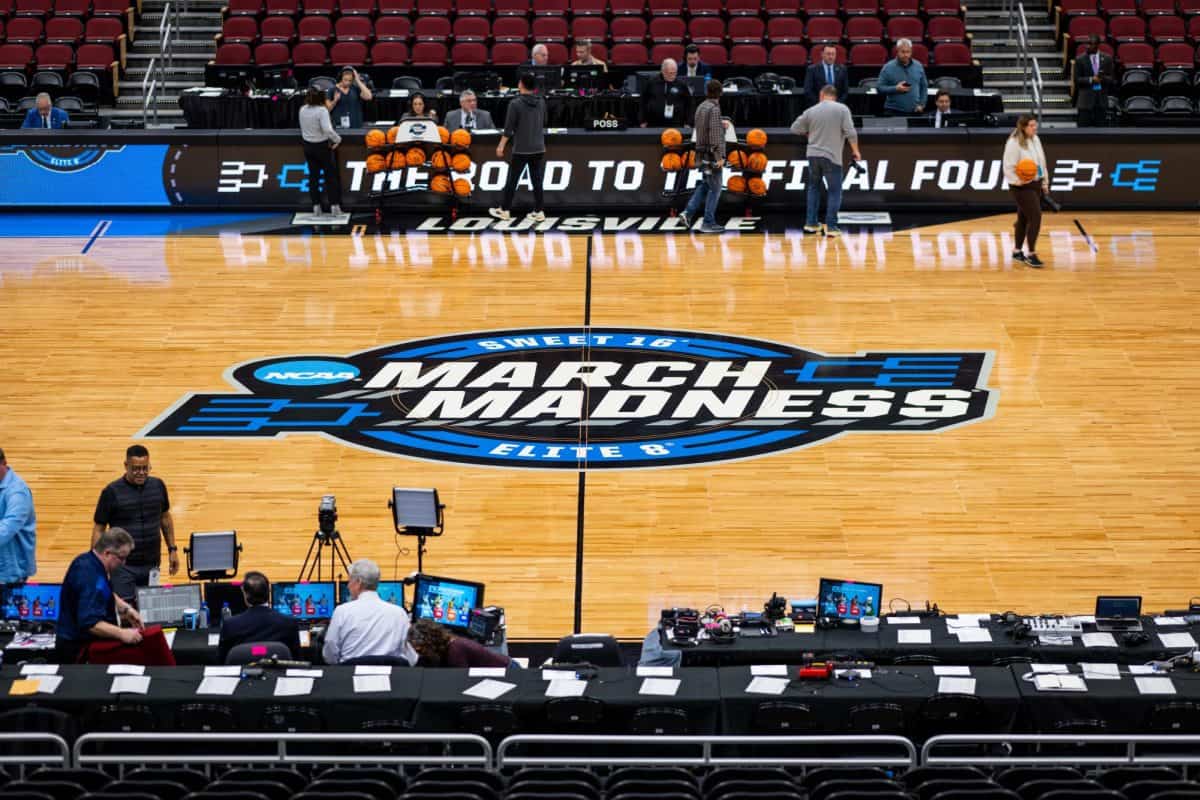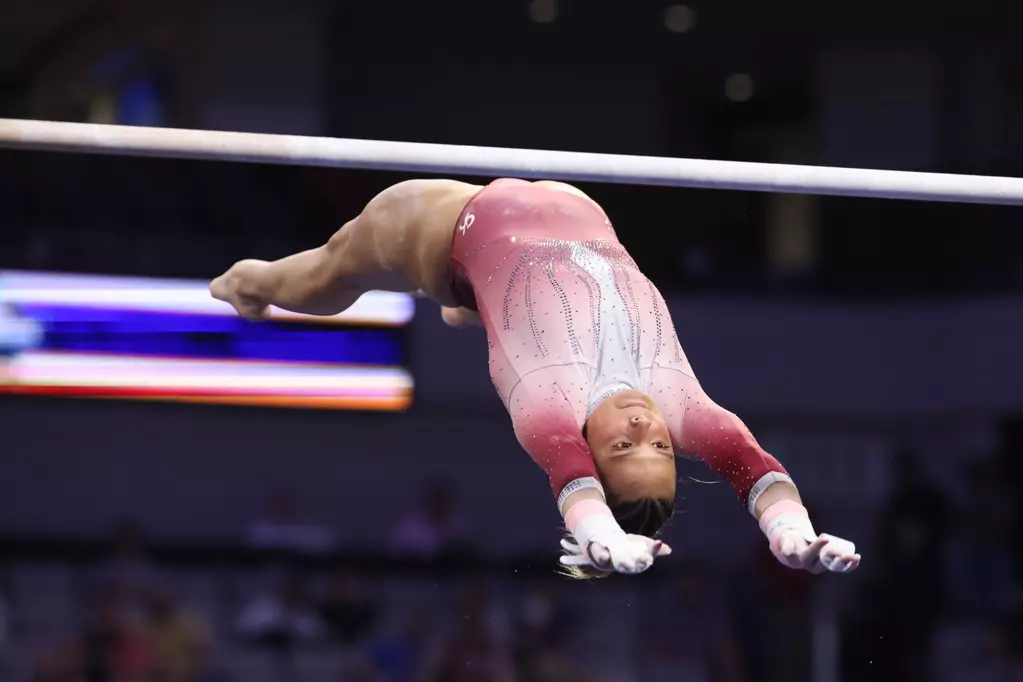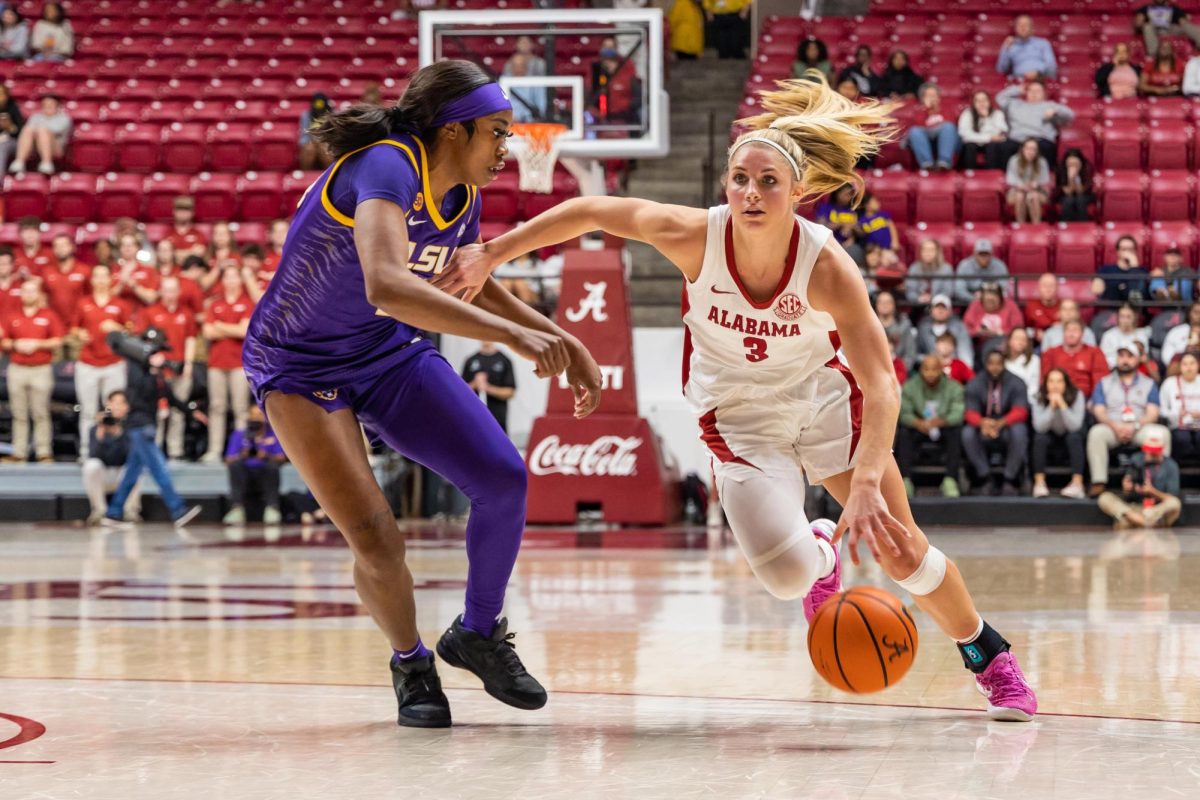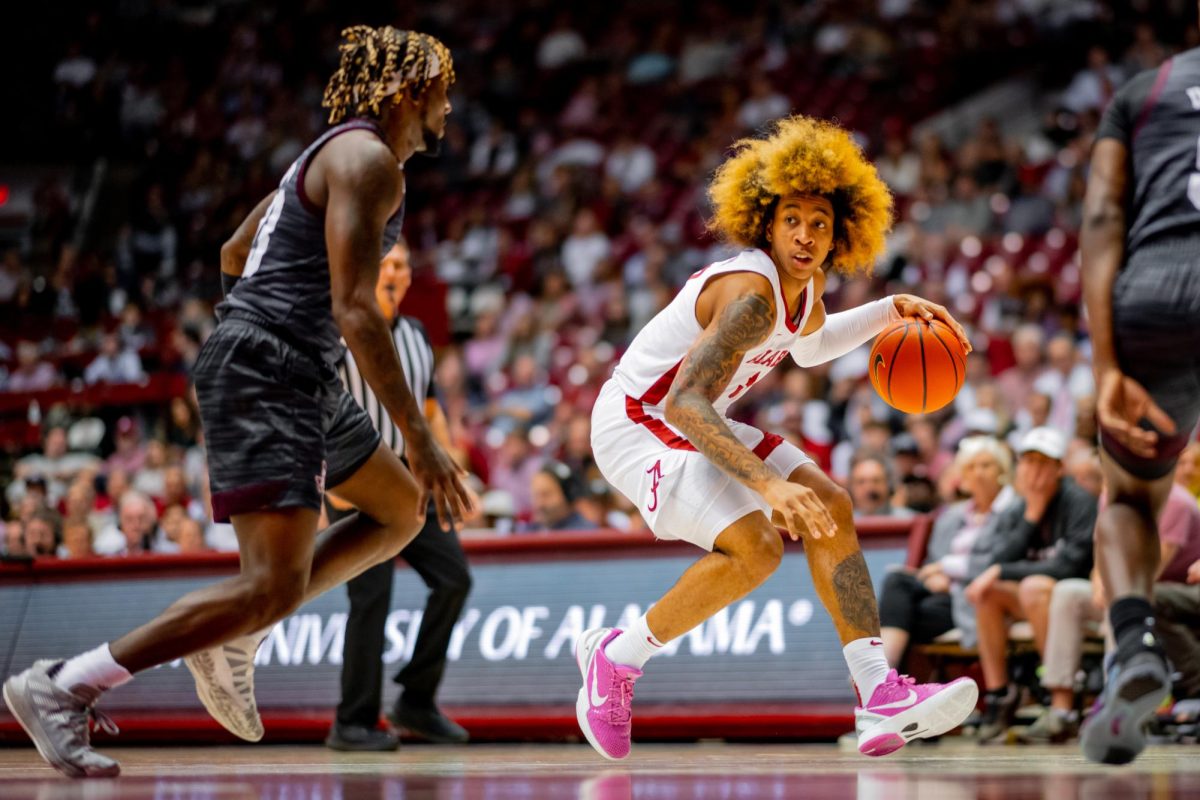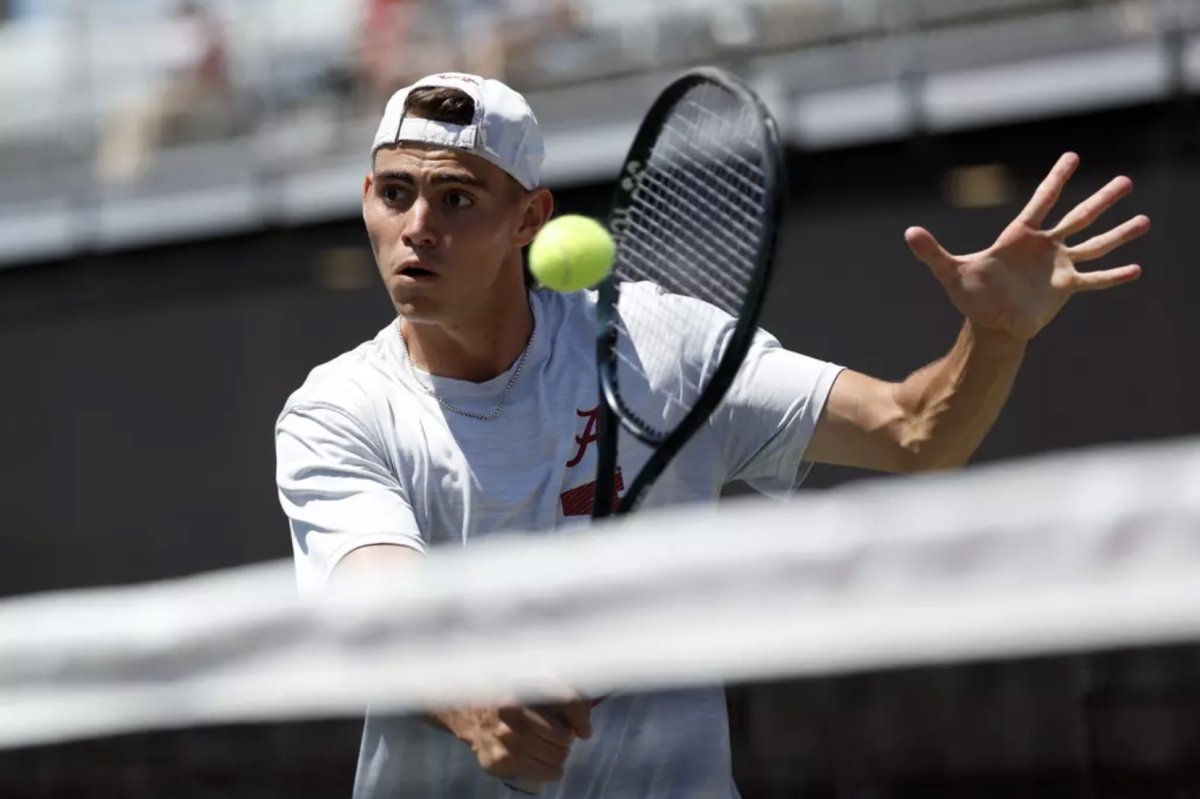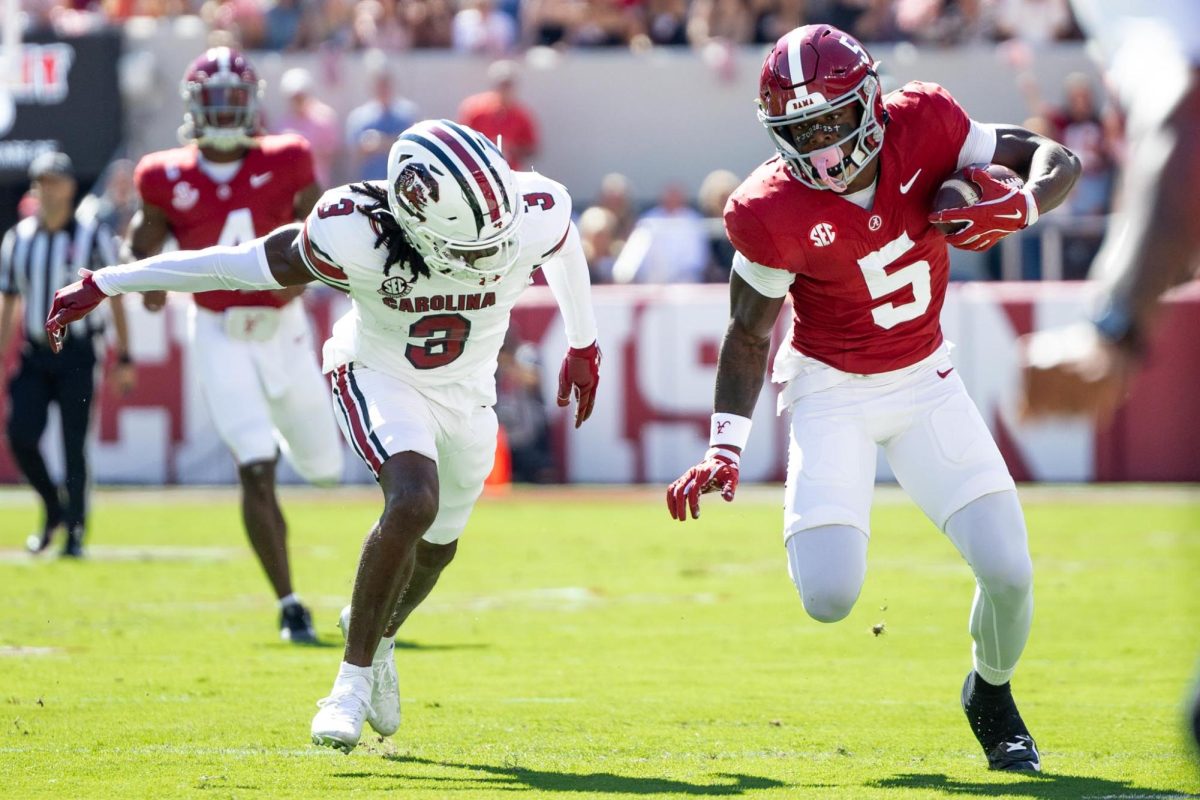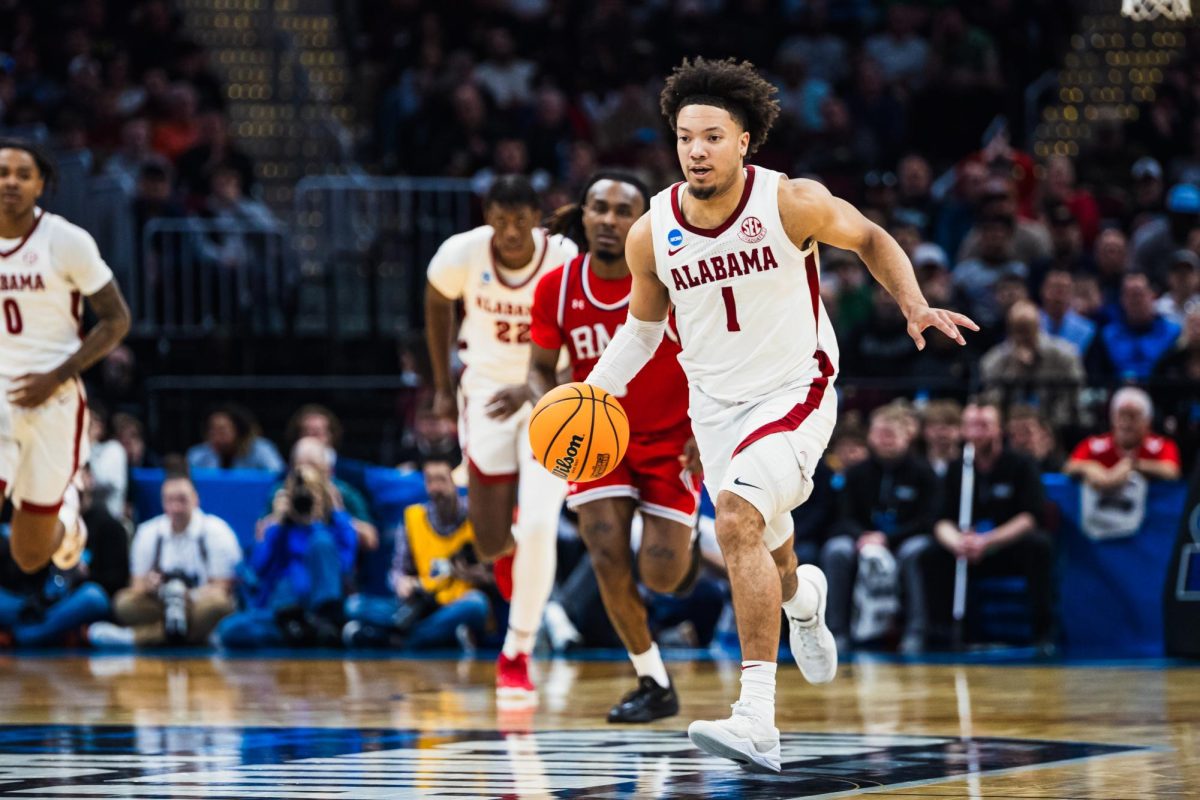The Alabama Crimson Tide men’s basketball team had one of the best seasons in program history in the 2022-23 season, finishing as the regular-season and tournament SEC champions, No. 1 in the Associated Press poll and the first overall seed in the NCAA tournament.
Students and media alike expected the Crimson Tide to win its first-ever NCAA tournament championship.
But then, on March 24, the Crimson Tide lost to the 5-seed San Diego State Aztecs 71-64 in the Sweet 16. This is just another example of the Crimson Tide’s seeming inability to move past the Sweet 16 on college basketball’s biggest stage.
Another recent example of Sweet 16 struggles comes from the COVID-shortened 2020-21 season. The Crimson Tide had another great year, sporting a 26-7 record and ending as SEC regular-season and tournament champions as well as earning a No. 2 seed in the NCAA tournament. Alabama lost, however, to the eventually Final Four-bound 11-seed UCLA Bruins by a score of 88-78 in overtime.
Alabama’s recent success under head coach Nate Oats has been something to admire, especially at a school that is generally viewed by the public as a football school.
However, it raises the question of why the team has seemed to struggle with getting past the Sweet 16.
While the results of these seemingly early tournament downfalls are disappointing, the overarching story of Alabama’s Sweet 16 struggles has deeper roots. The team struggles to maintain the same magic that carries it throughout the regular season and SEC postseason.
This past season, players like Brandon Miller, the No. 2 draft pick of the Charlotte Hornets in the 2023 NBA draft, and Noah Clowney, the No. 21 pick of the Brooklyn Nets, failed to step up and carry the team on their shoulders as they had in games past. As a whole, the entire team took a step back in production.
Statistics seemingly become a source of frustration during March Madness. The team’s dynamic 3-point shooting and ability to finish in the paint seemingly disappeared in its game against the Aztecs. Alabama’s field goal percentage finished at a miniscule 32.4%, its lowest percentage in a game since its 65-55 win at the South Alabama Jaguars on Nov. 15, 2022.
The 3-point shooting was abysmal to say the least as well. The Crimson Tide connected on only 3 of 27 3-point shots, ending at 11.1%. This was their lowest 3-point percentage in a loss all year, and Alabama’s only worse percentage was 10.7% in its opening night victory on Nov. 7 against the Longwood Lancers.
In comparison, San Diego State shot 37.7% from the field, and shot 6 for 17, or 35.3%, from the 3-point line.
In short, San Diego State had a game plan for Alabama, which was to reduce the amount of 3s made. The Aztecs succeeded in this plan, and charged their way to the Final Four to eventually lose to the soon-to-be national champion UConn Huskies 76-59.
Despite these repeated setbacks, there is plenty of optimism among Alabama fans that this upcoming season will be on par with the past’s success. Nate Oats and the Crimson Tide brought in 247Sports’ No. 16 overall recruiting class, with top 50 early enrollee Jarin Stevenson from Pittsboro, North Carolina, being the crown jewel.
The team also brought in plentiful transfers, having 247Sports’ No. 5 overall transfer class, with four-star power forward Grant Nelson transferring in from North Dakota State, among others.
The now-No. 24 Crimson Tide opens the 2023-24 campaign at Coleman Coliseum on Nov. 6. The Crimson Tide will look to repeat its conquest of the SEC and ultimately aim for a national championship berth.



